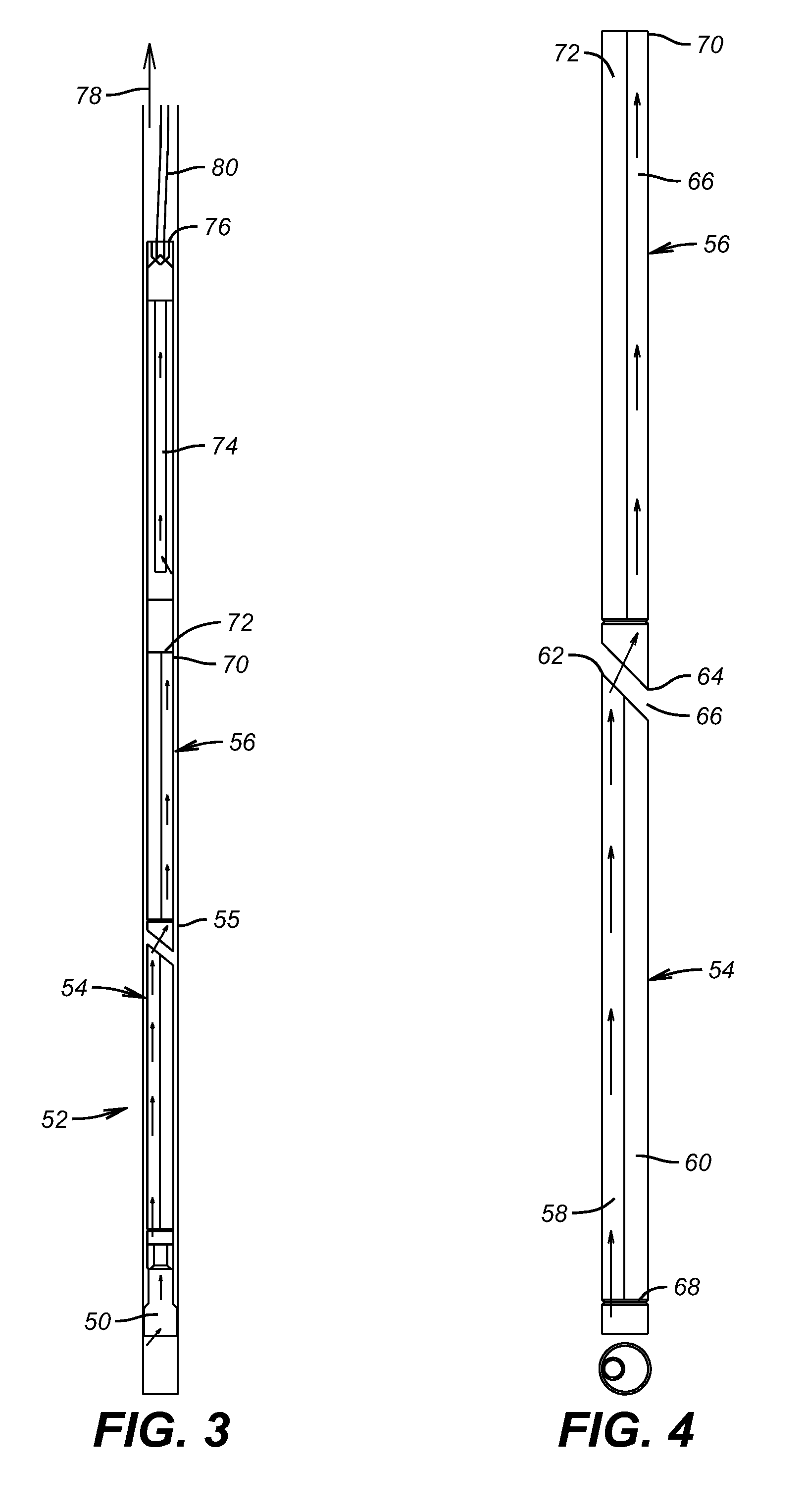Downhole Debris Catcher and Associated Mill
- Summary
- Abstract
- Description
- Claims
- Application Information
AI Technical Summary
Benefits of technology
Problems solved by technology
Method used
Image
Examples
Embodiment Construction
[0018]FIG. 5 shows a mill 50 with one embodiment of the debris catching tool 52 mounted above it. In this embodiment there are modules 54 and 56 shown in housing 55 although additional modules can be used. The modules 54 and 56 are shown in larger scale in FIG. 4 and without the housing 55 so that the flow pattern can be more easily seen. Debris laden fluid from the mill 50 enters passage 58 in module 54. Sitting beside passage 58 is passage 60 with both passages open at the upper end 62 of module 54. Upper end 62 is beveled and lower end 64 of module 56 is also beveled in a conforming way leaving a gap 66 between ends 62 and 64. Passage 58 continues up the tool into passage 66 of module 56. Passage 60 in module 54 has a closed bottom 68. When debris laden fluid exits passage 58 at the top 62 the velocity slows and the fluid stream has to negotiate a double bend to continue into passage 66. The combination of a slowing velocity and making the double bend to a position over the passa...
PUM
 Login to View More
Login to View More Abstract
Description
Claims
Application Information
 Login to View More
Login to View More - R&D
- Intellectual Property
- Life Sciences
- Materials
- Tech Scout
- Unparalleled Data Quality
- Higher Quality Content
- 60% Fewer Hallucinations
Browse by: Latest US Patents, China's latest patents, Technical Efficacy Thesaurus, Application Domain, Technology Topic, Popular Technical Reports.
© 2025 PatSnap. All rights reserved.Legal|Privacy policy|Modern Slavery Act Transparency Statement|Sitemap|About US| Contact US: help@patsnap.com



